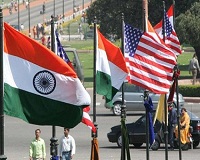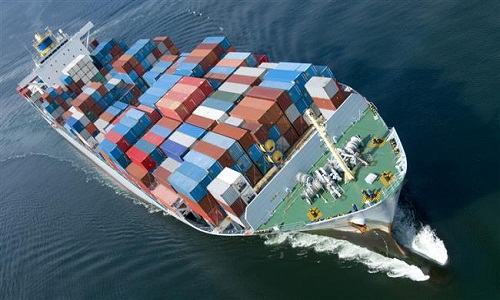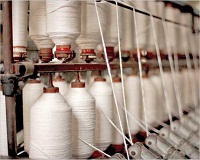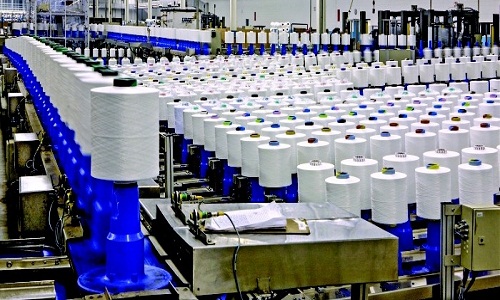FW
The 4th Africa Sourcing and Fashion Week (ASFW) will be held from October 1 -4, 2018 in Ethopia. The show will feature over 250 international manufacturers and exporters from 25 countries who will showcase their products and innovations to over 4.000 trade professionals and sourcing industry from around the world.
The show will also feature over 12 new South African manufacturers of leather products who will present their expertise and products to international fashion brands and buyers. The event will include the unique Walk for Business project that will connect over 25 high-end African designers from South, West and East Africa with international buyers and fashion brands for future collaboration.
The 4th ASFW Conference will be focus on ‘Sustainability in Production’ and ‘Transformation in Technology.’ A special conference on “Continental Free Trade in Africa” will also be held. In addition, an investment panel will highlight opportunities in Mauritius, Madagascar, Kenya and Ethiopia.
The event, endorsed by the Ethiopian government, will be organised in partnership with Messe Frankfurt Exhibition GmbH, Ethiopia Textile Development Institute (ETIDI) and Ethiopia Textile and Garment Manufacturers Association (ETGAMA).
"The global trade law for the 164 WTO members prohibits discrimination on the basis of tariffs. India raised basic customs duties on 43 broad categories of goods, including electronics, in this year’s Budget. It also raised import tariffs on 76 textile products and announced higher safeguard duties on solar cells imported from China and Malaysia. The tariff increases that India implemented so far are within the bound rates, unlike US President Donald Trump’s global tariffs on steel and aluminium as well as the ongoing tariff measures being taken by Washington DC and Beijing against each other."
 By imposing retaliatory import duty, India can fall under the list of nations that have broken their commitments to WTO, say trade experts. The bound tariff rate is the customs duty rate committed by a country to all other members under the most favoured nation principle.
By imposing retaliatory import duty, India can fall under the list of nations that have broken their commitments to WTO, say trade experts. The bound tariff rate is the customs duty rate committed by a country to all other members under the most favoured nation principle.
The global trade law for the 164 WTO members prohibits discrimination on the basis of tariffs. India raised basic customs duties on 43 broad categories of goods, including electronics, in this year’s Budget. It also raised import tariffs on 76 textile products and announced higher safeguard duties on solar cells imported from China and Malaysia. The tariff increases that India implemented so far are within the bound rates, unlike US President Donald Trump’s global tariffs on steel and aluminium as well as the ongoing tariff measures being taken by Washington DC and Beijing against each other.
Talking about India’s decision to increase duty rates, Biswajit Dhar, trade expert and professor at the Jawaharlal Nehru University says India had informed the WTO of its plan to raise tariffs through safeguards measures. But existing norms do not allow a country to take safeguard measures against just one nation, as India has done. The US has not respected the multilateral system recently, but if it feels that the tariffs are unjust, it should go to the WTO. In order to take control of the situation, a team of officials from India are camping in Washington DC, trying to secure an exemption from America’s aluminium duty hike, following which India may also roll back its own import hike.
Nehru University says India had informed the WTO of its plan to raise tariffs through safeguards measures. But existing norms do not allow a country to take safeguard measures against just one nation, as India has done. The US has not respected the multilateral system recently, but if it feels that the tariffs are unjust, it should go to the WTO. In order to take control of the situation, a team of officials from India are camping in Washington DC, trying to secure an exemption from America’s aluminium duty hike, following which India may also roll back its own import hike.
Is trade deficit on course?
A recent WTO report said, India has implemented 28 reforms facilitating trade, much higher than the two taken by China. Between mid-October 2017 to mid-May 2018, India led the pack among G20 nations in imposing tariff increases, stricter customs procedures, imposition of taxes and export duties. Aditi Nayar, principal economist, ICRA, feels the current account deficit is likely to widen to $16-17 billion or around 2.5 per cent of GDP in Q1 FY2019, from $14 billion in Q1 FY2018, with higher crude oil prices negating the contraction in gold imports.
On the other hand, domestic industry across varied sectors such as steel, apparel and electronics has complained of foreign goods flooding the market. Sanjay Jain, Chairman, at Confederation of Indian Textile Industries points out a substantial drop in import duty was observed after implementation of GST, which has encouraged cheaper imports. Imports in 2017-18 grew at a rate of 16 per cent. Therefore, the decision to increase import duties on many apparel items comes as a relief.
"After opening up trade tariff war with China in recent times, the US textile industry has been witnessing growth waves lately. Aided by Trump’s US-friendly policies, companies are eyeing a fortune in business but it’s said that the industry requirements don’t end here as Michael Woody, CEO, Trans-Tex, a Rhode Island-based maker of lanyards and shoelaces says there is a need to bring in a level playing field and the government needs to put tariffs on end products too that are imported from China. But the other lobby suggests placing duties on finished items is anathema to US retailers and consumer brands that rely on Chinese goods, including $28bn worth of apparel last year, to keep prices low for shoppers. They say levies will only increase price tags, and ultimately cost jobs."
 After opening up trade tariff war with China in recent times, the US textile industry has been witnessing growth waves lately. Aided by Trump’s US-friendly policies, companies are eyeing a fortune in business but it’s said that the industry requirements don’t end here as Michael Woody, CEO, Trans-Tex, a Rhode Island-based maker of lanyards and shoelaces says there is a need to bring in a level playing field and the government needs to put tariffs on end products too that are imported from China. But the other lobby suggests placing duties on finished items is anathema to US retailers and consumer brands that rely on Chinese goods, including $28bn worth of apparel last year, to keep prices low for shoppers. They say levies will only increase price tags, and ultimately cost jobs.
After opening up trade tariff war with China in recent times, the US textile industry has been witnessing growth waves lately. Aided by Trump’s US-friendly policies, companies are eyeing a fortune in business but it’s said that the industry requirements don’t end here as Michael Woody, CEO, Trans-Tex, a Rhode Island-based maker of lanyards and shoelaces says there is a need to bring in a level playing field and the government needs to put tariffs on end products too that are imported from China. But the other lobby suggests placing duties on finished items is anathema to US retailers and consumer brands that rely on Chinese goods, including $28bn worth of apparel last year, to keep prices low for shoppers. They say levies will only increase price tags, and ultimately cost jobs.
The Trump administration largely avoided hitting consumers in the first round with 25 per cent duties — mostly on machinery that came into effect from July 6, 2018. In return, China imposed retaliatory tariffs on goods from soybeans to electric vehicles (EVs), such as Teslas. The US again reciprocated with a proposal to put 10 per cent levies on $200bn worth of imports that included end products such as handbags, baseball gloves and air conditioners. According to Rick Helfenbein, President, American Apparel & Footwear Association this will not do anything to help American workers, consumers, or businesses. This will result in inflationary costs throughout the supply chain, ultimately to be paid by American consumers.
Textile advantage
More protections against Chinese imports could also boost production in American textile sector, if companies are looking for a green shoot, this could be an industry that could benefit. In 2017, the US imported $45bn textile products from China, and exported less than $1bn. That’s a trade gap of about $44bn just for textiles and apparel. Experts says, even a 10 per cent tariff, such as the one the Trump administration proposed recently, would help a company consider matching the Chinese more.
are looking for a green shoot, this could be an industry that could benefit. In 2017, the US imported $45bn textile products from China, and exported less than $1bn. That’s a trade gap of about $44bn just for textiles and apparel. Experts says, even a 10 per cent tariff, such as the one the Trump administration proposed recently, would help a company consider matching the Chinese more.
India’s garment exports have dipped for nine months in a row up to June. Apparel exports dropped almost four per cent in 2017-18 when the country’s overall goods exports jumped nearly 10 per cent. The contraction in exports has already stroked fears of job losses and compounded problems of policymakers who are contemplating how best to compensate textile and garment sector once subsidies to promote such exports are phased out.
Garment exporters are handicapped by duty disadvantage against key competitors like Bangladesh and Vietnam to key markets — the EU and the US — and high logistics costs. While Bangladesh ships out garments to the EU at zero duty, Indian companies are forced to cough up 9.6 per cent. India’s logistics costs account for as much as 15 per cent of consignment value against 10 per cent in many countries.
Under the Merchandise Exports from India Scheme, garments and made-ups exporters get duty exemption scrips, freely transferable for cash, worth four per cent of their total exports. But this supports seems inadequate. The cut in duty drawback and RoSL in the GST regime, capital blockage due to slow GST refunds initially and uncertainties on the future of export subsidies have affected the deeply-fragmented garment industry.
Texworld USA and Apparel Sourcing USA will organise the Summer 2018 speaker listing and educational seminar series. This season will include a multitude of themes including discussions on preferred fibers, sourcing, the upcoming Fall and Winter trends outlook and a movie screening of the movie RiverBlue
Texworld Showcase will highlight trends for the Autumn/Winter 2019/20 season, curated by Texworld Art Directors, Louis Gerin and Gregory Lamaud. Gerin and Lamaud will also present vignettes to be displayed in the SPOTLIGHT area of Apparel Sourcing which will feature ‘The Art of Customisation – Findings, Trims and Accessories’.
Jana Platina Phipps, a New York City-based expert known as the Trim Queen, will feature a trim activation. Known for her refined vision and impressive list of clients in the world of fashion and home furnishings, Jana will also conduct a hands-on passementerie workshop providing a brief history and how-to instructions for attendees.
Pakistan registered a 8.67 per cent growth in textile exports in last fiscal mainly due to sharp rupee depreciation, improvement in energy supply, partial releasing of refunds and cash subsidies under the Prime Minister Export Package. The country exported textile and clothing products worth $13.5 billion during the year 2017-18 as against $12.5 billion of the preceding year, according to the Pakistan Bureau of Statistics (PBS).
As per PBS, the main growth driver was the value-added textile sector. Exports of ready-made garments increased 11.22 per cent in the last financial year while knitwear exports increased 15.17 per cent during the period under review. Exports of bed wear went up by 5.77 per cent in value. Similarly, exports of made-up articles, excluding towels, increased by 7.04 per cent. Art, silk and synthetic textile exports grew by 65.09 per cent during the period under review. Exports of cotton yarn witnessed an increase of 10.3 per cent and exports of cotton cloth recorded a growth of 3.17 per cent.
The Karnataka government will support the proposed textile unit of Sutlej Textiles & Industries at the industrial estate in Badanaguppe and Kallambahalli villages in Chamarajanagar district. The new unit will be set up with an investment of Rs 786 crore, and will manufacture sportswear in the 46 acre allotted to it.
The government is keen to develop the Chamarajanagar district as it is the most backward district in the state. The Single Window Clearance Committee headed by the Deputy Commissioner has approved around 94 projects with a total investment of Rs 162 crore in the district. This will boost development of the district and increase employment opportunities for youth.
London Textile Fair was held July 18 to 19. British mills highlighted struggles around rising costs, while international exhibitors noted the UK market had cooled in recent seasons. Market concerns and nervousness were offset by the presence of good-quality buyers and a strong British showing.
Visitor numbers were down compared with the spring ’19 edition, which took place in January. However, several big names were spotted, Topshop, Debenhams and Urban Outfitters, as well as top designer names and contemporary brands.
Although some exhibitors reported lower footfall compared with previous seasons, the quality of buyers won praise. There were fewer people than the winter edition, but the visitors were all high quality and people really were looking for something specific. Visitors were overwhelmingly British. Most exhibitors reported 90 per cent UK buyers on the stands.
Almost all exhibitors were from Europe and Turkey. In fact, Turkey increased its delegation of suppliers this season, reflecting increased demand. There is a strong textile market in Turkey. Because of the short distance, people choose to do both in the same place to save transport costs, and lots of mills are also manufacturers. There was a section dedicated to sustainable and eco-friendly fabrics.
Pure London, the largest fashion festival in London and leading destination for fashion inspiration opened recently. The show featured some of the most exciting brands and the hottest emerging designers and global manufacturers. One of the highlights of the event included the re-launch of the Spirit fast fashion section as Gen Z to reflect the growing demographic du jour shaping our current culture and the future. Encapsulating the energy and mood of young fashion, Gen Z is filled with off-the-minute, trend-led, street style and unisex collections.
The S/S’19 Catwalks, showcased inspirational and creative talents of this year’s Graduate Fashion Week winners and graduates and key looks from the Common Ground, Creative Manifesto and In Touch trends. WGSN delivered their Future Consumer 2020 Buyer Briefing and a SS19 Trend Presentation spotlighting the new consumer voices including Gen Z bringing ‘Responsible Tech’, ‘Watch Now Buy Now’ and the new ‘Ethnic Majorities’ to the fore.
Laura Balmond from the Ellen MacArthur Foundation kicked off the Pure Origin stage outlining their vision for a circular economy and setting out how manufacturers, brands and the consumer can get on board and join forces to redesign fashion’s future.
Myanmar’s low wages is among the top reasons foreign manufacturers choose to set up base in the country. The garment industry was under pressure to raise the minimum wage. Now that the minimum wage has risen, businessmen are thinking twice before investing in manufacturing-intensive sectors like garments. The country’s daily minimum wage has been raised by more than 30 per cent.
Rising land costs are also a problem. Some manufacturers have been forced to move out of industrial zones as a result of rising land leases. At the same time, productivity, which is already lower than other countries in the region, has not improved. As a result, many garment businesses no longer want to operate in Myanmar.
Seduno Fashion Company, run by a Chinese investor, is a recent example. Earlier this month, the firm closed its factory citing low production, the inability to export in time, rising land and factory rentals and higher minimum wages as the main reasons for ceasing operations.
On the whole, FDI in garment sector is still robust. FDI into manufacturing sector are the third highest in Myanmar. Manufacturing in Myanmar mainly consists of garments, which represent the country’s second largest exports.












